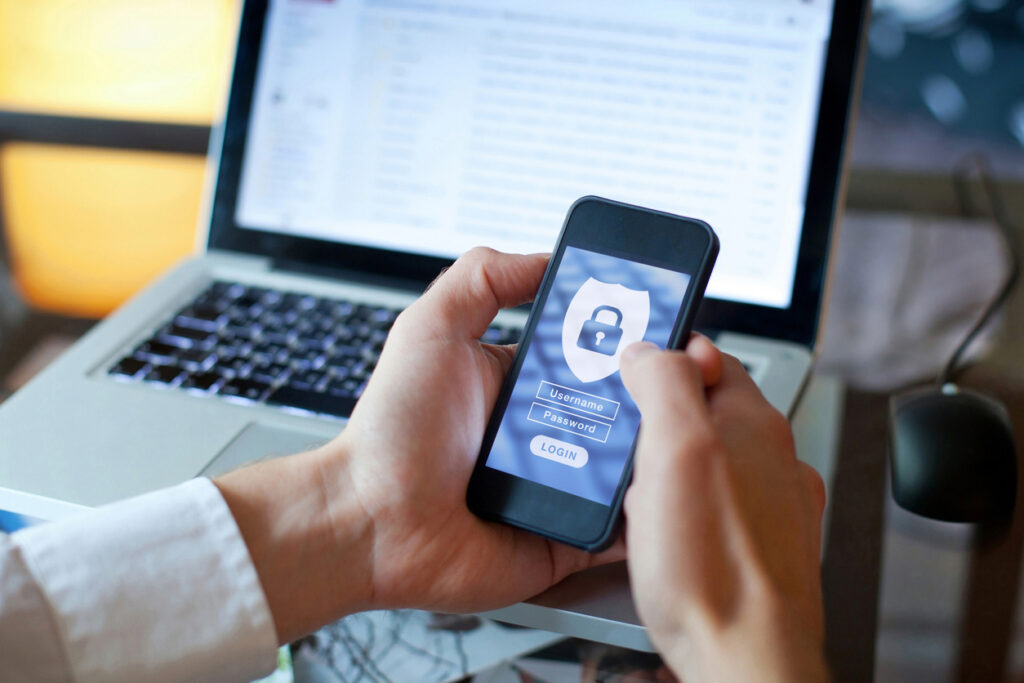Making online transactions increasingly secure, despite the rise in cyberattacks and data theft, has been a growing challenge for our economy since the pandemic. More and more companies feel that their existence is threatened by cyber-attacks. Identity fraud and other online threats are also becoming increasingly sophisticated.
According to a recent study, digital identities pose one of the greatest threats to the compromise of IT systems. In the financial sector for example, numerous attacks have recently been successful because employees with privileged access rights have been spied on and digital identities have been stolen through phishing campaigns. Therefore there is an urgent need to better protect our identities from theft and damage in the digital age. After all, our identity is the centrepiece of our online lives. Data leaks, malware or insecure networks and connections are a gateway to identity theft. AI will further accelerate this by generating code that only experienced hackers could create. AI-generated forgeries will become increasingly authentic and easy to use against victims. Identity protection will become one of the most important elements of data security. To better protect themselves in a digitally hostile environment in the future, organisations should push for a digital approach to data protection and risk management.

What does identity involve and how we can protect it?
Our online identity consists of several layers. On the one hand, there is our personal data that we use to verify ourselves, such as email, place of birth, date of birth and name. But it also includes things like bank details and other tokens – even biometric data. The following basic steps help protect identities from AI-powered risks. These are principles that, if followed, can provide identity protection for individuals, as well as legal obligations that companies must fulfil to mitigate risk and protect both customers and employees:
- Rely on the latest ID verification technologies: To successfully verify the identities of online users and know who you are doing business with. Modern identity and agreement technologies meet the requirements of Know-Your-Customer (KYC), Anti-Money Laundering (AML) and regional regulations. This enables organisations to protect important contracts and improve customer service.
- Seamlessly integrate cyber security policies and infrastructure into processes: Organisations need to work with best practice, not around it. Complemented by regular training and testing to keep the basics of cyber security in mind, as every single employee is vulnerable to social engineering as a user.
- Manage user authorisation and access rights: This step is closely linked to identity management and helps mitigate many other secondary threats. These include external attacks that exploit a security vulnerability as well as internal data breaches.
The online identity check at a glance
There are various ways in which users can have their identity verified online. This can be done through the use of facial recognition tools, video calls and the presentation of personal information. The use of multiple forms of proof increases the level of trust and security. For example, linking transactions to a one-off secure onboarding can provide a high level of trust – as long as this onboarding is thorough and verified. One example: passports. Official auditors rely on a few measures to verify them, but they trust them because the onboarding process for securing a passport is rigorous.
Real-time ID verification: It enables organisations to access and process customer information in seconds. This is particularly useful when checking IDs or financial transactions, as it can ensure that a company has up-to-date information. Verifying the identity of signatories is important to help organisations reduce fraud and money laundering and provide a frictionless experience for signatories, as today a fast and mobile-friendly online process is crucial for customers.
Biometrics: These are fingerprint or facial recognition. Biometric technology is the frontrunner among identity verification tools and is used, for example, to unlock smartphones. As biometric technologies have already proven to be beneficial for personal security and ID verification, it stands to reason that they will also provide a secure way to verify electronic signatures in the near future. They also assure companies that no unauthorised person can gain access to personal data.
Verification of identity without ID: There are various alternatives for authenticating a signature without the need for ID. If the signatory does not have an ID card to hand, knowledge-based verification can be used. Alternatively, authentication via mobile phone will be used more frequently in future to re-authenticate a known user. This involves sending an access code or text message to a mobile phone number or using the phone itself as an authentication vector and ID.
Reducing fraud with AI
While AI can increase the scope and scale of cyber risks, it also plays an important role in risk mitigation: in the future, AI will support identification during initial onboarding and all subsequent steps by providing a layer of assurance that looks for evidence of trust or signs of deception. It is important that customers perceive a company’s digital signature process as secure, as a positive and secure customer experience will influence whether they want to continue using the company’s services. There are also many use cases where AI is already being used to detect fraudulent activity – such as detecting relevant signals or patterns of unlikely user behaviour on a platform based on previous experience.
However, the ideal scenario is to utilise both humans and AI to increase security and trust. Both can bring risks, but together they help to optimise resilience to cyber-attacks and strengthen identity protection. To summarise, simple changes to processes, a clear understanding of digital identity protection and regular employee training on cyber security and data protection can often lead to significant improvements in corporate security.
